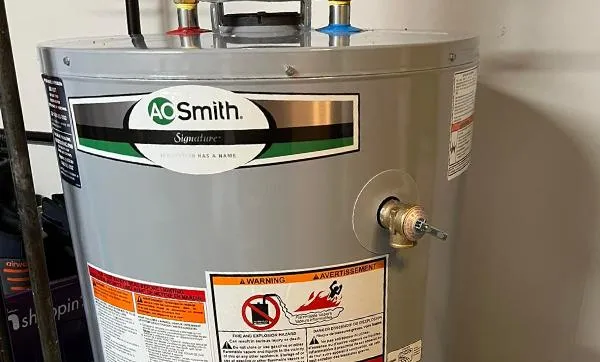
Tankless vs. Tank Water Heaters: Which Is Best for Your Edmonton Home?
When your water heater fails or you’re building or renovating a home in Edmonton, the choice between a tankless (on-demand) unit and a traditional tank (storage) model is not just about price. It’s about matching your household’s hot water demand, energy costs, installation constraints, and long-term reliability.
In this post, we’ll compare tankless and tank water heaters from the perspective of an Edmonton homeowner—look at pros, cons, technical factors, cost trade-offs, and help you decide which is better suited for your situation.
How Tankless and Tank Water Heaters Work
Before judging which is better, you need to understand how each type operates.
Tank Water Heaters
These are storage units: cold water enters the bottom, gets heated (by electricity, gas, or other fuel), and is stored hot until you draw from it.
Because the tank holds hot water continuously, there is “standby heat loss”—some energy is wasted keeping water hot even when unused.
When hot water is used, cold water refills the tank and the heater works to reheat.
Typical storage models in Edmonton are gas-fired or electric units designed for a home’s daily hot water needs.
Tankless (On-Demand) Water Heaters
These heat water only when you open a faucet or run a shower—no storage tank.
Cold water travels through a heat exchanger and is heated as it passes, delivering hot water “on demand.”
Because they don’t store water, there is virtually no standby heat loss, which helps energy efficiency.
However, capacity is limited by the flow rate and the energy supply (gas or electric) available.
Key Factors to Compare
Below are the major decision points when comparing tankless vs tank models, especially in Edmonton’s climate and home conditions:
Upfront Cost & Installation
Operating Cost & Efficiency
Lifespan & Maintenance
Tankless units often have longer lifespans (20+ years) if maintained properly.
Tanks usually last 10–15 years before failure or major repair.
Tankless units require periodic descaling or flushing, especially in hard water areas like Edmonton. Without this, scaling can block flow passages.
Capacity & Flow / Simultaneous Use
Space & Physical Constraints
Tankless units are compact and wall-mounted, freeing up floor space.
Tanks take up floor area and need clearance for servicing.
Water Supply & Infrastructure Compatibility
Decision Guide: Which Option Fits You Best?
Here’s a practical step-by-step method to decide:
Assess your hot water usage pattern
Do several appliances or showers run simultaneously?
Do you have occasional peaks or fairly steady demand
Evaluate your infrastructure & space constraints
Check gas supply, venting, electric capacit
Check space for a tank vs wall-mount for tankless
Estimate lifecycle cost
Compare upfront cost + installation vs expected energy and maintenance over 15–20 years
Consider redundancy or hybrid options
Some homes use a hybrid or buffer tank with tankless to smooth capacity demands
Backup or support systems help during extreme demand
Work with a qualified plumber
A local Edmonton plumber can model your demand, check venting, and ensure code compliance
They can size the unit properly (flow rate, temperature rise)
Plan for maintenance schedule
Tankless: periodic descaling / flushing
Tank: periodic draining, checking anode rods
When done systematically, your choice will align with your home’s needs and budget.
FAQs About Tankless vs Tank Water Heaters
Q: Will a tankless water heater run out of hot water?
A: No—provided the unit’s flow capacity is sufficient. It heats on demand, so as long as the required flow rate is within specifications, it can provide continuous hot water.Q: Are tankless units good in cold climates like Edmonton?
A: Yes, but you’ll need to factor in a higher temperature rise (cold inlet temperature) and ensure the system is sized accordingly. Also, proper maintenance is critical to avoid scaling that could reduce efficiency.Q: Which option has lower monthly energy bills?
A: In many cases, tankless heaters, by eliminating standby losses, offer lower energy costs—especially in homes with moderate hot water use.Q: Can I convert from a tank to tankless easily?
A: Sometimes, but usually you’ll need to upgrade gas lines, venting, and possibly electric/gas supply capacity.Q: What happens during a power outage?
A: Tank systems store hot water, so you may still have some hot water after a power cut. Tankless units require power at the time of demand, so during an outage, they won’t heat.
Conclusion
There’s no one-size-fits-all answer. Tankless units offer energy savings, space efficiency, and longer life—but at higher upfront cost and greater infrastructure demands. Tank (storage) heaters are simpler, often cheaper to install, and reliable for bulk usage. In Edmonton, because of colder inlet temperatures and hard water, proper sizing and maintenance are particularly important.
If you’re unsure which system suits your home, consult a local plumber. They can assess your household’s demand, check your infrastructure, and help you choose a model that balances cost, efficiency, and reliability.